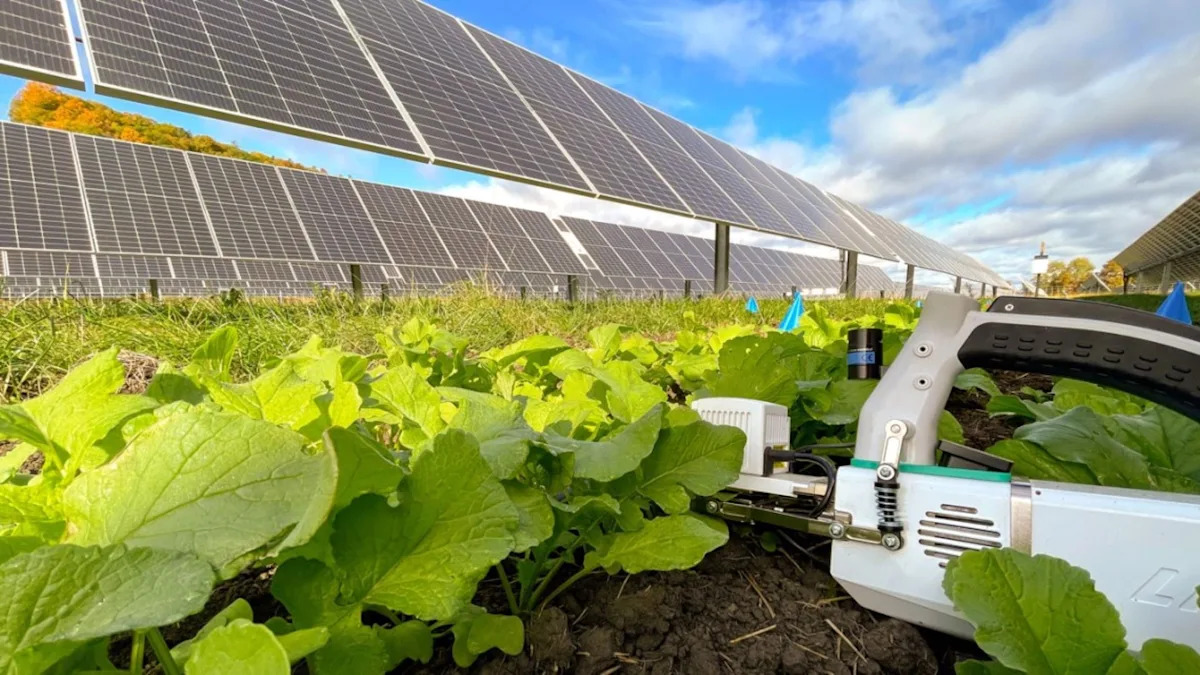A series of studies by Cornell University researchers explored which types of crops will work best for New York-area farms when paired with solar panel installations as they seek to optimize both energy and crop cultivation while addressing increased energy needs.
In a recent interview with WAMC, Matt Sturchio, a postdoctoral associate in Cornell’s Department of Natural Resources and the Environment, explained that approximately 84% of the state’s land that’s suitable for future solar developments is agricultural.
“New York State Ag and Markets wanted to know if it’s possible to do agrivoltaics,” Sturchio told the station. “So the co-location of crop lands and solar in New York State, there’s obviously a lot of land use tension, and developing solar on farmland is a pretty hot issue right now. So that’s how it all came to be.”
The combination of agriculture and solar photovoltaics, known as agrivoltaics, is being explored globally to optimize land use, provide farmers with extra income, and share the benefits of integrating farming with energy production.
Grazing animals can enjoy the shade from solar panels while munching on an area’s plant growth, helping the animals flourish and keeping land maintenance costs down.
When solar arrays are installed with minimal land disturbance, pollinators can thrive and support native grasses and vegetation.
With crop production, the Cornell studies found that New York’s short growing season and the types of crops used can seriously affect crop development and overall yields.
“We found out root crops might not be the best idea in a fall growing season,” Sturchio told WAMC.
“In the fall growing season, they end up putting more of their biomass into leaf tissue. So when they try to grow bigger leaves, they put less energy into growing roots and radishes. You want to grow more of that root tissue for the actual crop production.”
The shelter that solar panels provide creates microclimates that can reduce temperatures during the day and keep them warmer at night, which generally increases soil moisture levels.
According to a separate study on agrivoltaics, shared via Nature, many regions in North, Central, and South America, the Middle East, and North Africa have experienced increased aridity, which may put pressure on water access for food production.
As a result, freshwater demand for agriculture is projected to increase by 55% by 2050 worldwide, making innovative moves like expanding agrivoltaic developments important for food security in the face of a changing climate.
With around 9,300 acres of land already covered by utility-scale solar farms, maximizing dual land use will become increasingly critical for New York State, a Cornell report explained.
“We need to be able to find solutions that either co-locate or find the most efficient land use synergies for solar development, so that’s why we’re doing this work,” Sturchio added.
According to the Cornell report, the team will experiment with planting earlier and harvesting later to see if it can offset growth delays caused by the panels overhead. It’s also looking to Europe’s method of placing panels parallel with the sun’s rays, rather than perpendicular, as outlined by BayWa r.e.
“In redesigning these systems, we’d really want to put both the cropping and renewable energy at equal levels,” Toni DiTommaso, a professor at the university, added, per Cornell.
The next step in the team’s research will focus on planting strawberries, raspberries, winter wheat, soybeans, zucchini, peppers, chard, and dry beans, starting in the spring. They have reported promising early results, WAMC revealed.
Join our free newsletter for weekly updates on the latest innovations improving our lives and shaping our future, and don’t miss this cool list of easy ways to help yourself while helping the planet.

